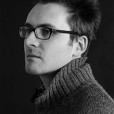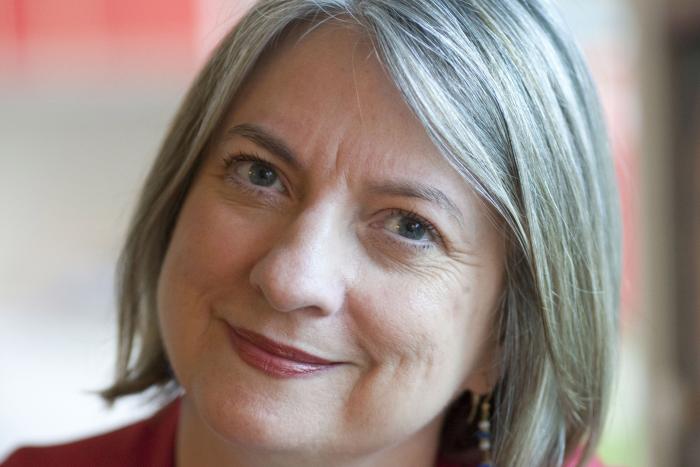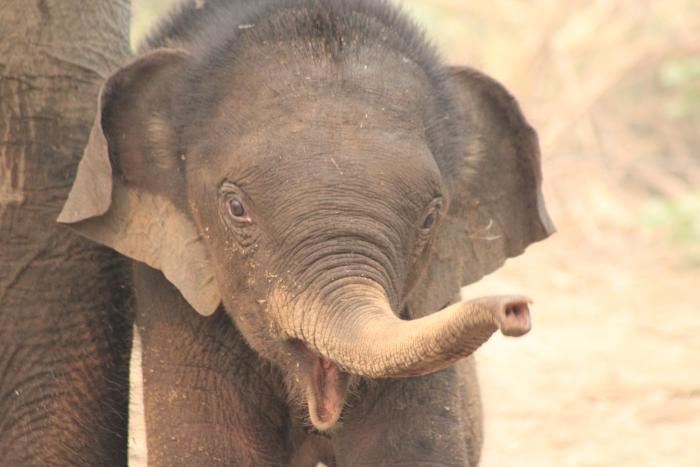In her curatorial statement for virtual gallery space The Looking Glass, Wallflowers author Eliza Robertson writes that her characters “think by the way they see.” The project’s previous curator, Lee Henderson, shares a similar indebtedness to the visual world, made explicit through the inclusion of a comic strip in his latest novel, The Road Narrows As You Go. We brought these two authors together to discuss how visual art interacts with and influences their writing, and the limits of discussing multiple art forms in the same breath.
Eliza: Any idea how to start this, Lee? “Interplay between writing and other art forms.” Is it cheating to say, “tag, you’re it?”
I could also send some kind of leading question. The obvious one being how art and writing interact for you, in reading or writing, question mark. Take it or leave it!
Lee: Yeah they kind of threw us into the deep end, didn’t they? Good question! So I don’t even know how to begin to separate writing from other arts, they are all so essential to me—I love showbiz, I love art and literature. But I do notice there are books of fiction that seem very relatable to art, sympathetic to, or critical of what’s happening in art, and then there are books of fiction that seem completely oblivious, indifferent, or downright hostile to what’s happening in art. And there’s successes and failures on both sides. I’m not always conscious of anything other than the story at-hand when I sit down to write, but I’m aware that a fascination with art informs my decisions on a deeper level, because I spend so much of my spare time staring at art and reading about it.
The same is true of the reverse: that some artworks or artists seem to have no relationship to literature, and that fact’s probably not going to make or break the merits of the work. Would you agree, or do you see the interaction differently, and do you find any really direct relationships between your writing and something in the world of art?
Eliza: Funny thing: when you describe books that appear hostile to art, it sounds like a criticism. But that’s not right, is it? As you say, there are successes and failures on both sides. (Can you think of a hostile success story, by the way? I’d be curious.) I think this gets at something. We consider “art” a benevolent, desirable thing like democracy, or ice cream. No one wants to admit if they dislike it. But it’s okay to dislike it. Democracies suck sometimes, and ice cream drips/ leaves behind a scummy dairy mouth.
How does art interact with my writing? Well: I’m not much of a visual artist. So writing is my art. But I find it interesting that the two mediums can be used to critique or compliment the other. For example, when someone says, “that painting tells a whole novel.” I feel uncomfortable with that. 11So: I say that novel line in my Looking Glass curatorial statement. My criticism is mostly aimed at unthinking borrowed metaphors. I wrote that one mindfully! Also: I don’t always practice what I preach. It attaches primacy to the plot or story and ignores other elements of fiction. I don’t often hear: “that photograph uses too many to-be verbs” or “that collage is a kickass limited third person.” I’m not saying you should. That would be silly. I suppose what I am saying is... maybe the two interact naturally, but when we force connections, the language spreads thin. To conclude: insomuch that writing is my art, I agree with you. I don’t easily separate the two. But sometimes I feel uneasy when we do not stop to think about borrowed metaphors.
All that said, art can be a story-starter for me too. Once I saw a photograph of a woman with Kewpie doll heads on her nipples. That image has been branded into my novel.
Do you use the same thinking cap for visual and writing art? Or do you swap art-helmets? Do you storyboard? Or does art play a role in its own right?
Lee: One could say that what Lydia Davis writes cleaves closer to the concerns of contemporary art than does the short fiction of Ann Beattie (born the same year), but regardless both are amazing writers. I’m not sure if Richard Ford has contributed one whit to the modalities of conceptual art, whereas it is more than likely WG Sebald has made an impact (born the same year), yet they’re both well-regarded writers. The old school naturalists and the sui generis—no matter how they interact with the rest of the arts, all four authors are significant to contemporary literature.
But for me, when I think about how time works in a narrative I don’t just look at how other writers I love have approached this subject. I’m a curious person, so I’m reading theories about time, and looking for art with time as a theme. I wonder how I could respond in my own way to something like The Clock, that epic piece by Christian Marclay, or to the infinitely looping works of Stan Douglas. I’m fascinated by all that stuff. When I first moved to Vancouver in the 90s I was really inspired by Jeff Wall and Stan Douglas and the NE Thing Company and so on—I used to go check out all the photoconceptualists’ shows, really exciting stuff. Then things got more loose and multimedia like Jason McLean and Geoffrey Farmer’s work and I really like what happened to local art in my generation and after—super inspiring.
Half my undergrad was politics, but I can’t say I consciously invoke them in my writing. That said, political themes still creep in. In Wallflowers you will find gender issues, class issues, the tar sands, etc. But I’m not toeing any party lines. I’d like to see a good story that toes a party line. I suppose the nearest bet is satire, but maybe that’s the anti-line.
All that said, given the carnage in Gaza, it was a political decision to include two photos from Teju’s Occupied series— specifically, images of two Palestinian women in Jerusalem. A curator can be sneaky like that.
You’re right— language is important to me in fiction. Whether I’m writing or reading it. It can be important at the expense of other elements, sometimes. Like plot. Not to force the theme here, but when you ask what I choose to depict, are you asking how I curate my fiction? The honest answer: I’m not sure. The details I choose are not thoughtless... but nor are they mindful. I suppose it’s intuitive. The other day, we went for tea at some old friends of my father’s—all of whom worked in a design capacity at the Royal BC Museum. One friend, Georgina, said she did not have a clue how to improve the exhibits... But she intuited they needed more smell. So she brewed a vat of fish manure to slosh over the Cannery display. (This tactic eventually vetoed by the security guards.)
I suppose that describes my own process too. In general, I don’t have a clue. I just take a whiff and start concocting.
Lee: I’m not sure fish manure was the least provocative choice! I like the smells in art galleries, very specific to each show, each space, room, not at all like the smells outside. Not that you’re supposed to go around sniffing it, but oil paints smell amazing, like on a still-wet canvas, wow, that’s a hypnotic smell. Also a lot of different woods, stones, and metals have distinctive blood-like smells that probably add in some subtle way to the atmosphere around them in a gallery. On my ever-growing mental list of why I’m not interested in reading more than social media on an e-book device is that I like all the different ways books smell.
Hey, is it true your father designs exhibitions? I’m not sure if I heard right, but if so has he been doing that your whole life? Did you grow up going to art galleries and museums and hanging out with artists?
Eliza: Yup—my dad was chief of design at the RBC Museum. I have fond memories of attending openings with miniature hot dogs and stilts walkers. (The circus exhibit.) Also: the Christmas parties were cracking. Many of his good friends were artists, and I grew up with their work on our walls or bookshelves. Perhaps some of that has seeped in by osmosis. I hope so.
Last question from me. You’re a big hip hop fan. Do you listen to rap when you write and/or draw?
Lee: Yeah, for sure, I love rap. I used to only be able to listen to instrumental music when I wrote. I understand this is common. But then one day, I think it was in 2003 or 2004, I could write and listen to rap at the same time. What a breakthrough! I look for what’s good and new. Since Outkast, I mostly go for the sounds of the South and right now, what’s happening in Atlanta. Gucci Mane and artists like Migos, Rich Homie Quan, Ola Playa, Hoodrich Pablo Juan, Young Scooter, MPA Shitro…Young Thug might be the hottest thing since Future, but PeeWee Longway has my vote for best rap alias of 2014.






